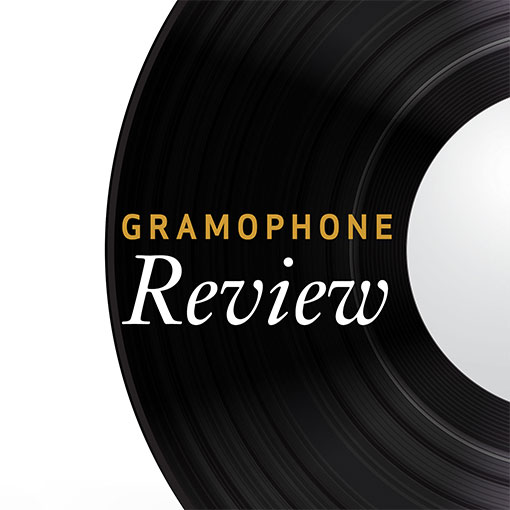Rachmaninov/Prokofiev Piano Concertos
View record and artist detailsRecord and Artist Details
Composer or Director: Sergey Rachmaninov, Sergey Prokofiev
Label: DG
Magazine Review Date: 6/1985
Media Format: CD or Download
Media Runtime: 58
Mastering:
ADD
Catalogue Number: 415 119-2GH

Tracks:
| Composition | Artist Credit |
|---|---|
| Concerto for Piano and Orchestra No. 5 |
Sergey Prokofiev, Composer
Sergey Prokofiev, Composer Sviatoslav Richter, Piano Warsaw National Philharmonic Orchestra Witold Rowicki, Conductor |
| Concerto for Piano and Orchestra No. 2 |
Sergey Rachmaninov, Composer
Sergey Rachmaninov, Composer Stanislaw Wislocki, Conductor Sviatoslav Richter, Piano Warsaw National Philharmonic Orchestra |
Author: Joan Chissell
We're constantly meeting Richter in the role of deeply searching musician. So how refreshing to have this reminder of his virtuosity too. Both performances surely qualify as 'great performances on record'; the CD catalogue would have been incomplete without them.
In the Rachmaninov Richter is no slave to the metronome. His opening tempo is considerably slower than the marking in the score (particularly the eight introductory bars), which involves him in rather more than a poco piu mosso between figs. 3 and 4 to get things into their proper stride. The slow movement in its turn is slower than the prescribed marking, just as the finale is much faster. Yet everything is done with such conviction that while listening you feel there could be no other way. Helped by Wislocki each movement seems to find a natural flow and to carry you along on its own tide. Second subjects yield up all their nostalgia without obtrusive rubato. And you could hardly hope to hear the finale launched with a more abandoned yet scrupulously controlled kind of scintillating brilliance. Never, though, is it playing that draws attention to itself at the orchestra's expense. Duetting with individual instruments is close, and no felicities of scoring go unmarked. As for the recorded tone, it has exceptional succulence for its age and comes over splendidly on CD.
From the viewpoint of sound per se, the Prokofiev is still more remarkable. Such textural clarity, coupled with such variety of colour and tonal sheen, makes it hard to believe that the recording dates right back to 1959. Soviet commentators, like Nestyev, dismiss the concerto itself as typifying the arid western Prokofiev before returning to the nourishment of his native soil. It certainly could sound contrived. But when put over with the rhythmic bite, the technical aplomb and the general pungency of characterization that we get here from the Warsaw Philharmonic and Rowicki no less than the soloist, then it's a very different story.'
In the Rachmaninov Richter is no slave to the metronome. His opening tempo is considerably slower than the marking in the score (particularly the eight introductory bars), which involves him in rather more than a poco piu mosso between figs. 3 and 4 to get things into their proper stride. The slow movement in its turn is slower than the prescribed marking, just as the finale is much faster. Yet everything is done with such conviction that while listening you feel there could be no other way. Helped by Wislocki each movement seems to find a natural flow and to carry you along on its own tide. Second subjects yield up all their nostalgia without obtrusive rubato. And you could hardly hope to hear the finale launched with a more abandoned yet scrupulously controlled kind of scintillating brilliance. Never, though, is it playing that draws attention to itself at the orchestra's expense. Duetting with individual instruments is close, and no felicities of scoring go unmarked. As for the recorded tone, it has exceptional succulence for its age and comes over splendidly on CD.
From the viewpoint of sound per se, the Prokofiev is still more remarkable. Such textural clarity, coupled with such variety of colour and tonal sheen, makes it hard to believe that the recording dates right back to 1959. Soviet commentators, like Nestyev, dismiss the concerto itself as typifying the arid western Prokofiev before returning to the nourishment of his native soil. It certainly could sound contrived. But when put over with the rhythmic bite, the technical aplomb and the general pungency of characterization that we get here from the Warsaw Philharmonic and Rowicki no less than the soloist, then it's a very different story.'
Discover the world's largest classical music catalogue with Presto Music.

Gramophone Digital Club
- Digital Edition
- Digital Archive
- Reviews Database
- Full website access
From £8.75 / month
Subscribe
Gramophone Full Club
- Print Edition
- Digital Edition
- Digital Archive
- Reviews Database
- Full website access
From £11.00 / month
Subscribe
If you are a library, university or other organisation that would be interested in an institutional subscription to Gramophone please click here for further information.





